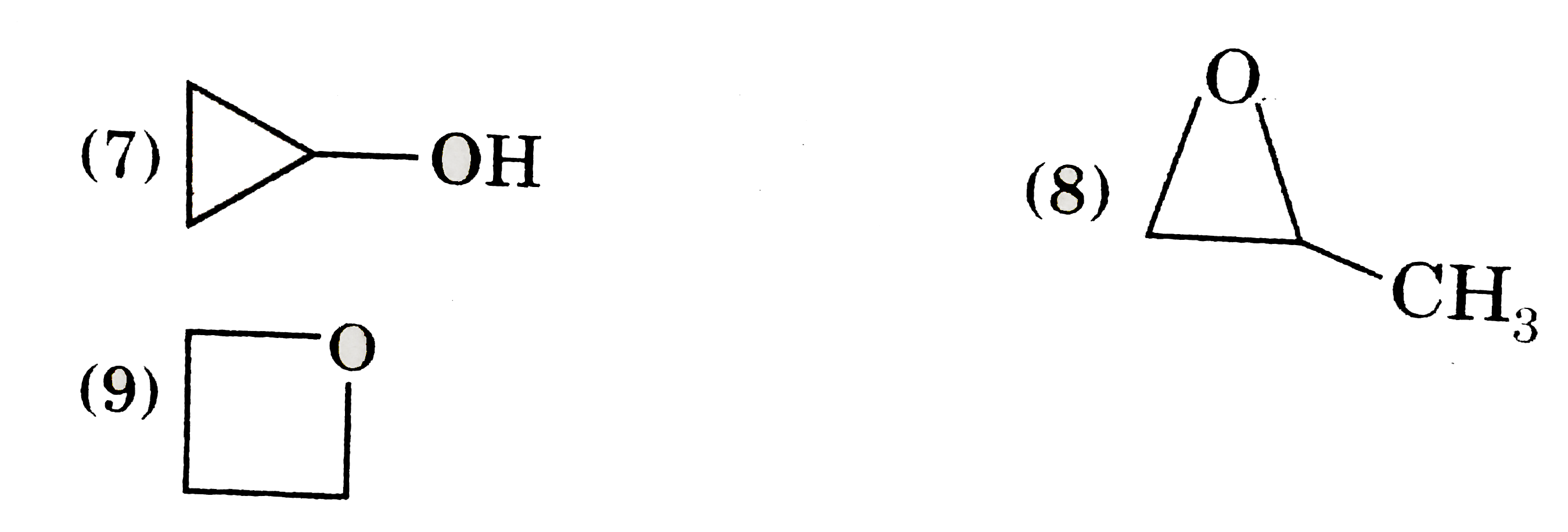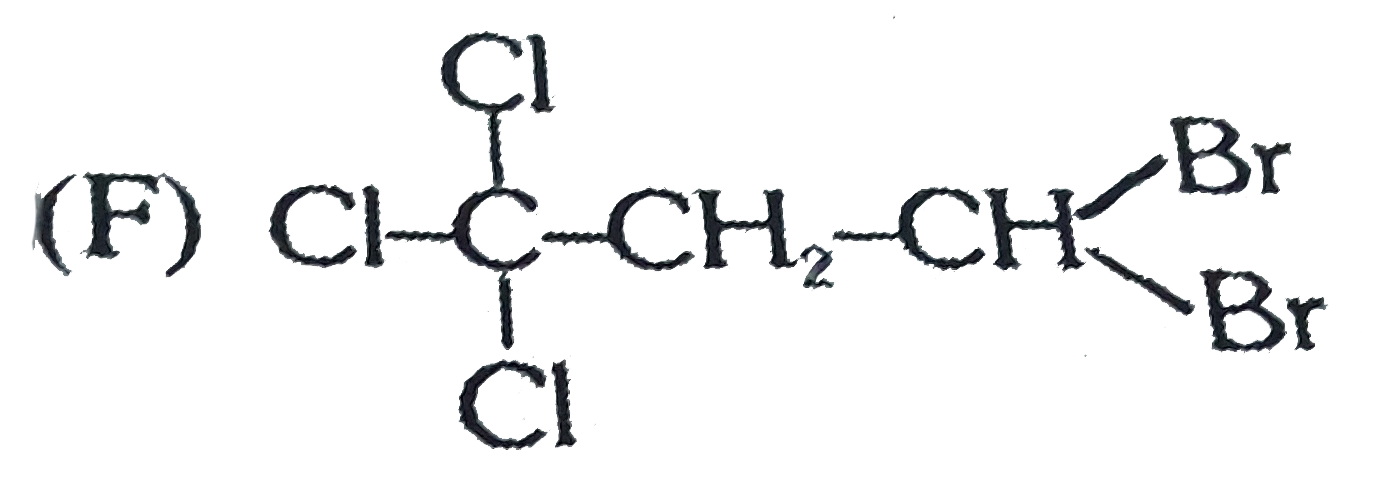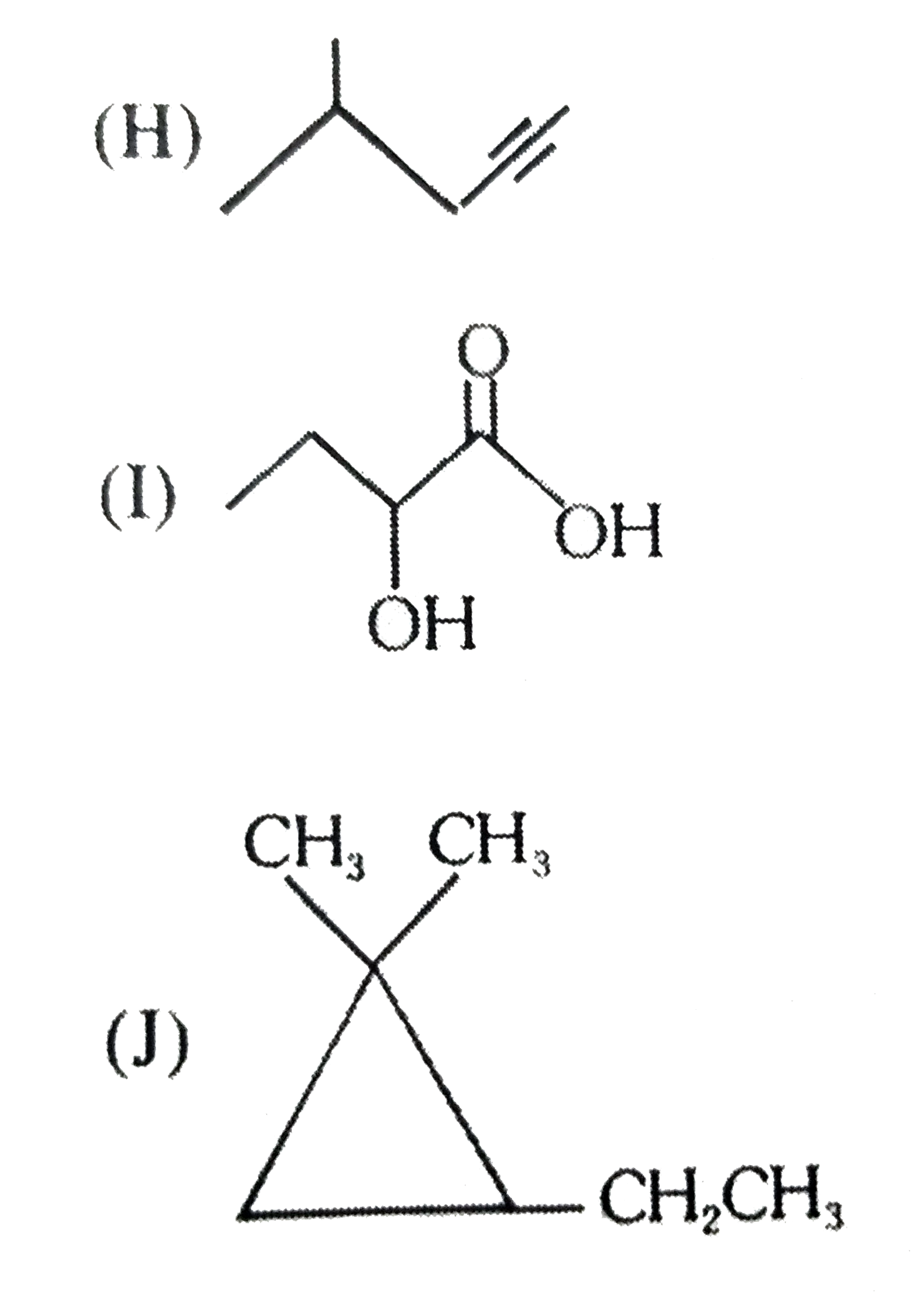CH3−CH2−CH2−C∣OHH−CH3 and CH3−CH2−C∣OHH−CH2−CH2−CH3 are
Functional isomers
Position isomers
Chain isomers
These are not isomers
To solve the question regarding the relationship between the two compounds, let's analyze the given structures step by step.
Step 1: Identify the Compounds
The two compounds given are:
1. Compound A: CH₃-CH₂-CH₂-CH(OH)-CH₃
2. Compound B: CH₃-CH₂-CH(OH)-CH₂-CH₂-CH₃
Step 2: Count the Atoms
Next, we need to count the number of carbon (C) and hydrogen (H) atoms in each compound.
- For Compound A:
- Carbon atoms (C): 5
- Hydrogen atoms (H): 12
- Therefore, the molecular formula is C₅H₁₂.
- For Compound B:
- Carbon atoms (C): 6
- Hydrogen atoms (H): 14
- Therefore, the molecular formula is C₆H₁₄.
Step 3: Determine the Relationship
Now, we analyze the relationship between the two compounds based on their molecular formulas.
- Since Compound A has 5 carbon atoms (C₅H₁₂) and Compound B has 6 carbon atoms (C₆H₁₄), they have different molecular formulas.
- For two compounds to be considered isomers, they must have the same molecular formula but different structures or arrangements of atoms.
Conclusion
Since the two compounds have different numbers of carbon and hydrogen atoms, they are not isomers. Therefore, the answer is that these two compounds are not isomers.
The two compounds given are:
1. Compound A: CH₃-CH₂-CH₂-CH(OH)-CH₃
2. Compound B: CH₃-CH₂-CH(OH)-CH₂-CH₂-CH₃
Next, we need to count the number of carbon (C) and hydrogen (H) atoms in each compound.
- Carbon atoms (C): 5
- Hydrogen atoms (H): 12
- Therefore, the molecular formula is C₅H₁₂.
- Carbon atoms (C): 6
- Hydrogen atoms (H): 14
- Therefore, the molecular formula is C₆H₁₄.
Now, we analyze the relationship between the two compounds based on their molecular formulas.
- For two compounds to be considered isomers, they must have the same molecular formula but different structures or arrangements of atoms.
Since the two compounds have different numbers of carbon and hydrogen atoms, they are not isomers. Therefore, the answer is that these two compounds are not isomers.
Topper's Solved these Questions
- ORGANIC CHEMISTRY : SOME BASIC PRINCIPLES AND TECHNIQUES BOOK - AAKASH INSTITUTECHAPTER - ORGANIC CHEMISTRY : SOME BASIC PRINCIPLES AND TECHNIQUES EXERCISE - Assignment(SECTION B)
3 Videos
- ORGANIC CHEMISTRY : SOME BASIC PRINCIPLES AND TECHNIQUES BOOK - AAKASH INSTITUTECHAPTER - ORGANIC CHEMISTRY : SOME BASIC PRINCIPLES AND TECHNIQUES EXERCISE - Assignment(SECTION C)
37 Videos
- ORGANIC CHEMISTRY : SOME BASIC PRINCIPLES AND TECHNIQUES BOOK - AAKASH INSTITUTECHAPTER - ORGANIC CHEMISTRY : SOME BASIC PRINCIPLES AND TECHNIQUES EXERCISE - Exercise
64 Videos
- MOCK_TEST_20BOOK - AAKASH INSTITUTECHAPTER - MOCK_TEST_20EXERCISE - EXAMPLE
28 Videos
- ORGANIC CHEMISTRY: SOME BASIC PRINCIPLE AND TECHNIQUESBOOK - AAKASH INSTITUTECHAPTER - ORGANIC CHEMISTRY: SOME BASIC PRINCIPLE AND TECHNIQUESEXERCISE - TRY YOURSELF
28 Videos
Similar Questions
Knowledge Check
Solubility order in H2O for compounds
(P)H2C∣OH−C∣OHH−C∣OHH−C∣OHH2
(Q)H2C∣OH−CH2−CH2−C∣OHH2
(R) H3C−CH2−CH2−CH2−OH
will be :AP > R > QBP > Q > RCQ > R > PDR > Q > PIUPAC name of the following compound
CH3−CH2−C∣CH3H−CH2−C∣C2H3H−CH2−CH3A3-Ethyl-5-methyl heptaneB5-Ethyl-3-methyl heptaneC2-Ethyl-5-methyl heptaneD4-Ethyl-5-methyl heptaneMolecular formula C3H6O having following structures.
(1) CH2=CH−CH2−OH
(2) CH2=C∣OH−CH3
(3) C∣OHH=CH−CH3
(4) CH3−CH2−C∣∣O−H
(5) CH3−C∣∣O−CH3
(6) CH2=CH−OCH3

Which of the following set is not example of positional isomerism?A(4) and (5)B(2) and (3)C(1) and (2)D(1) and (3)
CH3CH∣NH2−CH2CH2C∣OHHCH2CH3
View SolutionWrite down the IUPAC names of the following compounds :-
(A) CH3−CH∣C2H5−CH3∣CH−CH∣OH−CH3
(B) CH2=CH−CH∣CH2−OH−CH2−CN
(C) CH3−CH2CH3∣C∣CH3−C(CH3)3
(D) CH3−CH∣CN−CN∣CH−CH2−CH3
(E) CH2=CH−CH∣C≡C−CH3−CH2−CHO
(F)
(G) CH2=CH−CH∣CH3−C≡CH

View SolutionCH3−CH2−CH∣CH3−CH3∣C∣CH3−CH2OH
View SolutionHOCH2−CH3−CH∣CH3−CH2−CH∣CH3−CH2OH
View SolutionThe IUPAC name of CH3−CH∣OH−CH2−CH∣COOH−CH3 is:
View Solution
